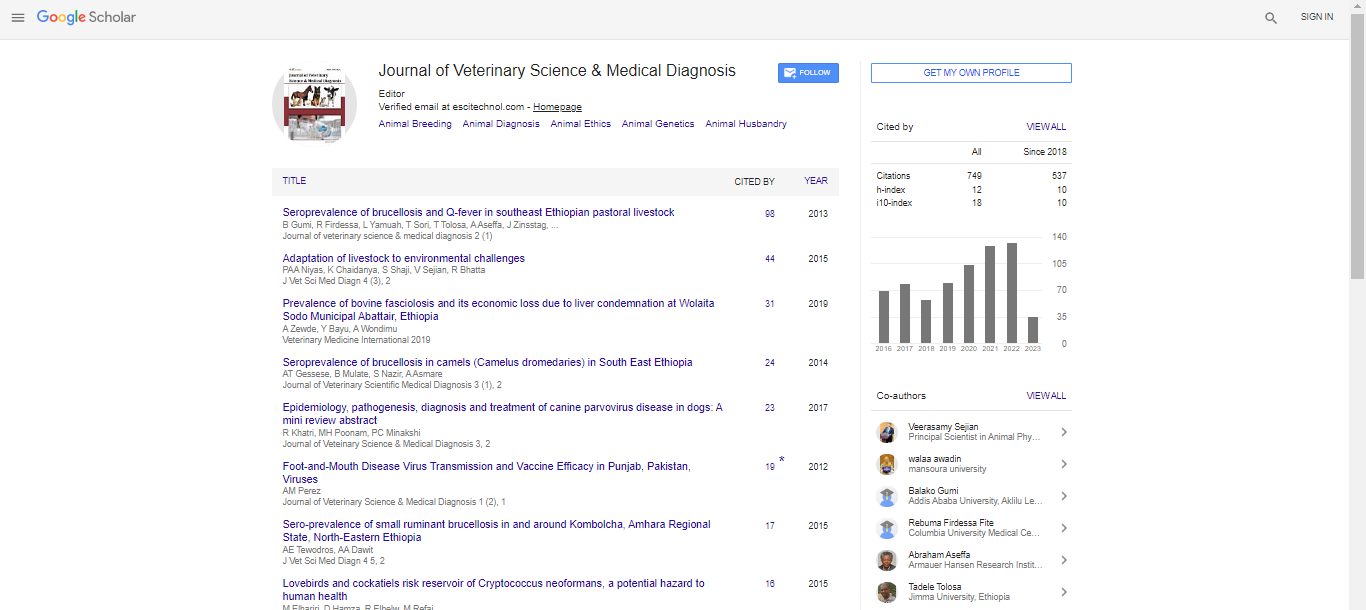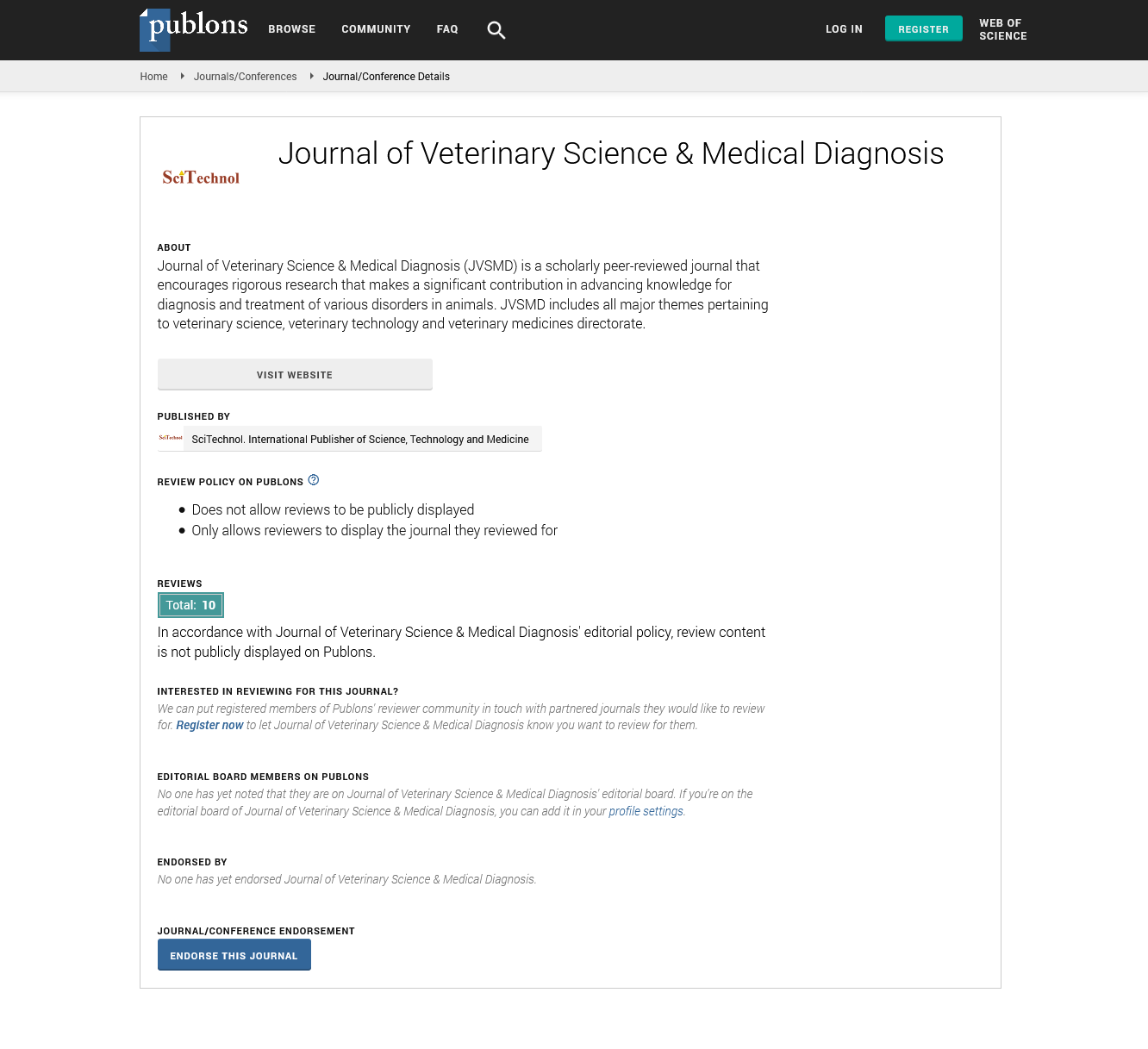Hematological and Serum Electrolyte Changes Following Elective Laparorumenotomy in West African Dwarf Goats
Foluso B Bolaji-Alabi, Daniel O Ajayi, Adenike O Olatunji-Akioye
University of Ibadan, Nigeria
: J Vet Sci Med Diagn
Abstract
Laparorumenotomy is widely used for the management of various conditions associated with the abdominal and ruminal diseases in goats. Changes in blood volume and electrolytes occur preoperatively, intraoperatively and postoperatively and this study determined some haematological and serum electrolyte changes following elective laparorumenotomy. Eight male West African Dwarf (WAD) goats aged 1-1.5years weighing 8-10kg with body condition score of 3±0.5 were acquired and acclimatized in four weeks. Following normal heamogram and physical examination, they were randomly assigned numbers 1-8. They were fasted, sedated and prepared for aseptic surgery. Laparorumenotomy was done using standard laparotomy incision on the left flank. Blood was collected presurgically (control) and immediate postsurgically (ps), 24, 48, 72, 96 and 120 hours later. The packed cell volume (PCV), haemoglobin (Hb), red blood cell (RBC), white blood cells (WBC), platelets, sodium (Na+), potassium (K+) and calcium (Ca2+) concentrations in the blood samples were obtained using cyanmethaemoglobin method and randox standard test kit. The control values were compared with the mean variables obtained after surgery using ANOVA. The PCV and Hb were significantly different (p<0.05) 48hours ps compared to control. RBC was significantly different (p<0.05) at every ps time point while WBC were significantly different (p<0.05) at 96 and 120hours ps. Platelet count was significantly different (pË? 0.05) 24, 48 and 120hours ps. Calcium and potassium were significantly different (pË? 0.05) 120 hours ps. Platelet counts was significantly different (pË? 0.05) 96hours ps while sodium was significantly different 48, 72, 96 and 120hours ps. The impact of elective laparorumenotomy on haematological and serum electrolytes followed a pattern dependent on homeostasis and inflammatory response that enables healing. With disease conditions where derangements already exist, this impact may be life threatening without precautionary measures and nursing support.
 Spanish
Spanish  Chinese
Chinese  Russian
Russian  German
German  French
French  Japanese
Japanese  Portuguese
Portuguese  Hindi
Hindi 
